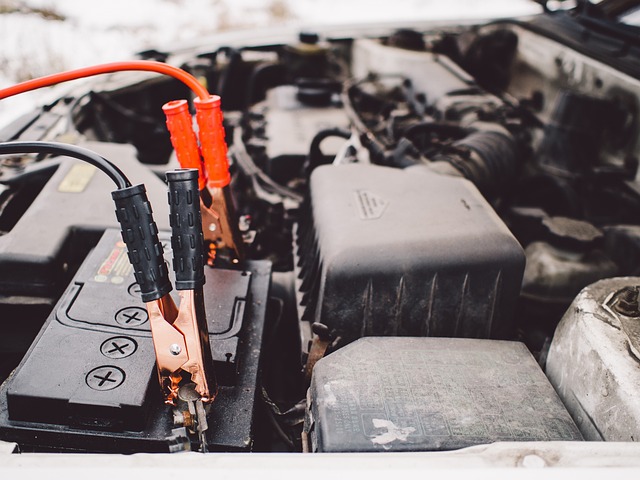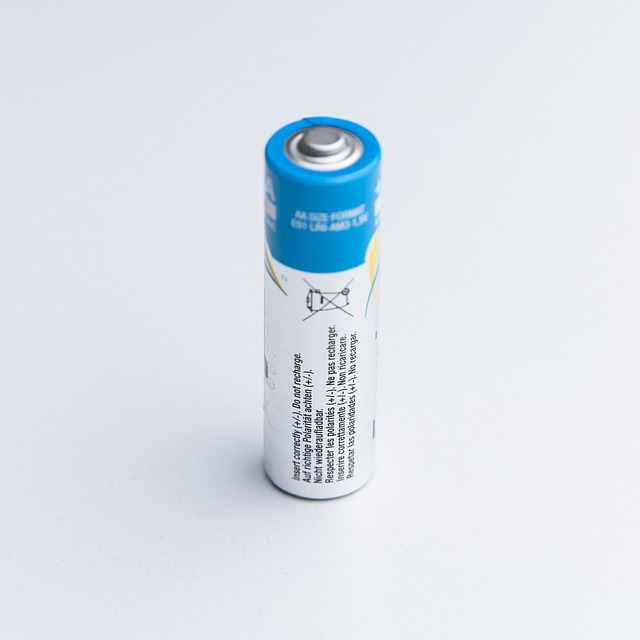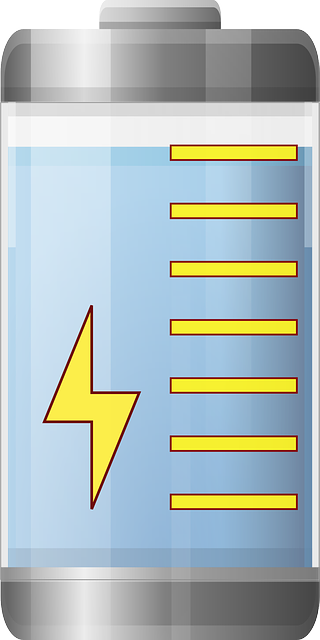Every year, a significant number of incidents involving button batteries in children’s toys lead to serious injuries. This article sheds light on the hidden dangers of these compact power sources and provides critical insights into safe toy selection and usage. We will explore the risks associated with button batteries, their role within toys, and how to identify high-risk items. With a focus on statistical data and warning signs of poisoning, the piece underscores the importance of understanding the regulatory frameworks in place for toy safety. It concludes with practical preventative measures, emphasizing the shared responsibility of parents and manufacturers to protect children from these hazards. Join us as we delve into the safe handling and disposal of toys powered by button batteries, ensuring a safer play environment for our youngest innovators.
- Understanding Button Battery Risks in Children's Toys
- The Anatomy of a Button Battery and its Role in Toys
- Identifying High-Risk Toys with Concealed Button Batteries
- Statistical Insights on Button Battery Ingestion Incidents
- Recognizing the Warning Signs of Button Battery Poisoning
- Regulatory Frameworks and Safety Standards for Toy Safety
- Preventative Measures: Safe Handling and Disposal of Toys with Button Batteries
- A Call to Action: Parental Vigilance and Manufacturer Responsibility
Understanding Button Battery Risks in Children's Toys

Button batteries present significant risks when found in children’s toys. These small, circular cells, often referred to as coin batteries, can be a choking hazard and pose serious health threats if ingested. The high voltage and alkaline content of button batteries can cause severe chemical burns to internal tissues, including the esophagus, stomach, or intestines, within a short period after ingestion. This makes it critical for manufacturers to ensure that battery compartments are securely fastened and tamper-resistant, especially in toys intended for young children. Additionally, consumers must be vigilant, regularly inspecting toys for loose parts and promptly disposing of or professionally recycling batteries to prevent accidental exposure. Awareness campaigns also play a role in educating both parents and children about the dangers of button batteries and the importance of proper handling and disposal. It is imperative that safety standards are upheld to protect children from these hidden hazards, which can lead to serious injuries or even fatal outcomes if not addressed promptly.
The Anatomy of a Button Battery and its Role in Toys

Button batteries, small disc-shaped cells that provide power for a wide array of electronic devices including toys, are integral components in the functionality and convenience of many consumer products. These batteries, also known as coin cells, are designed with a specific anatomy to efficiently store and deliver energy. The core structure of a button battery typically includes a positive electrode made from lithium or aluminum, a negative electrode composed of zinc, a separator that prevents the reactions between the two electrodes when they come into contact, an electrolyte solution containing potassium or sodium hydroxide, and a casing usually made from plastic or stainless steel to protect the internal components. The size and shape of these batteries are standardized to fit within the compact design of toys, enabling them to power features like light-up eyes, sound effects, and interactive mechanisms without bulky external power sources. Their role is not merely to energize but also to ensure a safe and seamless user experience by providing a consistent energy supply that can be easily replaced or accessed in small devices. The ease of use and the compact nature of these batteries make them an indispensable part of modern toys, but their potential hazard when ingested necessitates careful design and consideration for safety measures to prevent harmful incidents.
Identifying High-Risk Toys with Concealed Button Batteries

When assessing the safety of toys with button batteries, it is imperative to prioritize the identification of high-risk items. These small, coin-sized batteries can pose a significant hazard when ingested or when they come into contact with bodily fluids, leading to chemical burns. To mitigate this risk, consumers and manufacturers must be vigilant in identifying toys that conceal button batteries. Key indicators of high-risk toys include those designed for young children, often defined by age grading labels such as ‘suitable for ages 3 and up’, and toys with easily accessible or compartmentalized batteries that are not securely fastened. It is crucial to ensure that these batteries are either firmly affixed within the toy or that the toy’s design incorporates a safety feature that prevents battery access if the toy is damaged or disassembled. Additionally, clear labeling and instructions for safe usage and disposal of toys containing button batteries are essential. By adhering to these precautions, the potential dangers associated with button batteries in toys can be significantly reduced, safeguarding children’s well-being. Regular inspections and adherence to safety standards are indispensable in this context to prevent tragic accidents related to button battery ingestion.
Statistical Insights on Button Battery Ingestion Incidents

button batteries present a significant hazard in toys, particularly those that require user interaction such as remote controls or educational devices. Recent statistical insights indicate a concerning trend in button battery ingestion incidents. Data from health organizations and poison control centers worldwide reveal that thousands of children annually swallow these batteries, leading to potential severe injuries. The small size of these batteries allows them to pass through the esophagus and become lodged in the gastrointestinal tract or even perforate vital organs. This poses a critical health risk as the battery can cause caustic burns over time due to the release of alkaline substances when it becomes corroded. The severity of these incidents underscores the necessity for stringent safety measures and regulations governing the design, packaging, and distribution of toys containing button batteries. Awareness campaigns are also essential to educate both parents and manufacturers about the dangers associated with these batteries and to promote safe disposal and storage practices.
Recognizing the Warning Signs of Button Battery Poisoning

Button batteries, often found in small electronic devices and toys, pose a significant risk if ingested. These lithium-powered cells can cause severe chemical burns upon contact with bodily fluids, leading to what is termed ‘button battery poisoning.’ Recognizing the warning signs of this condition is critical for prompt medical intervention. The first indicator is usually vomiting within minutes to hours after the ingestion event; it may be accompanied by abdominal pain. These symptoms can arise from the corrosive effects of the battery’s alkaline content interacting with mucosal membranes or tissue. If a button battery is suspected to have been swallowed, immediate medical attention is essential. Other potential signs include lethargy and changes in behavior, which may suggest the battery has perforated the gastrointestinal tract and entered other parts of the body. The presence of these symptoms, especially when coupled with a history of potential battery ingestion, necessitates an emergency department visit for proper diagnosis and treatment.
Parental vigilance and awareness are key in preventing button battery poisoning. Toys containing these batteries should be inspected for secure fastenings, and any damaged products should be disposed of safely. Keeping the National Poison Data System (1-800-222-1222) or a local poison control center’s contact information handy can provide guidance in such emergency situations. Additionally, installing child safety locks on batteries and ensuring that toys are age-appropriate can further mitigate the risk of accidental ingestion. It is imperative to handle button batteries with care and to educate children about the dangers they pose to prevent tragic outcomes from this hidden hazard.
Regulatory Frameworks and Safety Standards for Toy Safety

Within the realm of toy safety, regulatory frameworks and stringent safety standards are pivotal in ensuring that children’s products do not pose undue risks. These guidelines, set forth by organizations such as the Consumer Product Safety Commission (CPSC) and the International Organization for Standardization (ISO), are particularly attuned to the potential hazards of button batteries found within certain toys. Button batteries, due to their small size and high energy output, can pose serious health risks if ingested, including chemical burns and perforation of internal organs. The CPSC has mandated specific safety requirements for toys containing these batteries, including securely fastening battery compartments to prevent unintended access. Additionally, ISO standards provide comprehensive guidelines on the design and manufacturing processes that minimize the risk of accidental ingestion or exposure to hazardous materials in toy batteries. These frameworks are critical in harmonizing safety practices globally and ensuring that manufacturers prioritize child safety in their product design. It is imperative for all stakeholders, from producers to consumers, to remain vigilant and adherent to these regulations to maintain the integrity of toy safety, particularly with respect to button batteries.
Preventative Measures: Safe Handling and Disposal of Toys with Button Batteries

To mitigate the risks associated with button batteries in toys, it is imperative to implement robust preventative measures that encompass safe handling and responsible disposal. These small, coin-sized lithium batteries can pose serious health hazards if ingested. They have the potential to cause severe chemical burns as they generate an electrical current when contacted by bodily fluids. To avert such incidents, manufacturers must design toys with secure battery compartments that prevent unintended access. Consumers should always supervise young children during playtime and promptly dispose of batteries no longer in use.
When the time comes to discard these batteries, it is crucial to handle them with care. Batteries should never be placed in regular trash bins where they could be mistaken for regular coins or inadvertently accessed by children. Instead, they should be taken to designated collection points or recycling centers that accept battery disposal. These facilities are equipped to manage the hazardous materials safely and responsibly. Additionally, household waste management services often provide guidelines on the correct disposal methods for button batteries. Adherence to these protocols is key in preventing unintended exposure and safeguarding both children and the environment from the potential dangers of button batteries.
A Call to Action: Parental Vigilance and Manufacturer Responsibility

When integrating technology into children’s toys, manufacturers have a responsibility to prioritize safety, particularly with the inclusion of button batteries. These small, round cells are often found in products designed for young consumers, powering everything from educational devices to musical greeting cards. However, their size—which makes them attractive to curious and exploring hands—also poses a significant hazard. If swallowed, button batteries can cause severe internal injuries, including perforation of vital organs or chemical burns. It is imperative that these batteries are securely enclosed within the toy to prevent access, and that warning labels are clear and conspicuous to alert parents of the dangers.
Parental vigilance is equally critical in safeguarding children from the risks associated with button batteries. As consumers, parents must remain informed about the types of batteries present in toys and be proactive in inspecting purchases for proper battery containment. They should also be aware of the symptoms associated with a button battery ingestion emergency, which can include abdominal pain, nausea, vomiting, or lethargy. In the event of a suspected incident, immediate medical attention is essential. A call to action is sounded for both manufacturers and parents: to ensure that precautions are taken to prevent access to these hazardous components and to respond swiftly should an incident occur. Together, through diligence and responsibility, we can protect our children from the hidden dangers of button batteries in toys.
In conclusion, the hazards associated with button batteries in children’s toys present a significant safety concern that warrants immediate attention from all stakeholders. It is imperative for parents and caregivers to be vigilant, ensuring that toys compliant with safety standards are chosen and that proper precautions are taken when handling or disposing of them. Manufacturers have a responsibility to adhere to stringent regulatory frameworks, which dictate the design and labeling of toys containing button batteries. By implementing preventative measures and fostering awareness, we can mitigate the risks associated with these powerful yet perilous cells. It is only through collective action that we can safeguard our children’s well-being and promote a safer environment for play.



